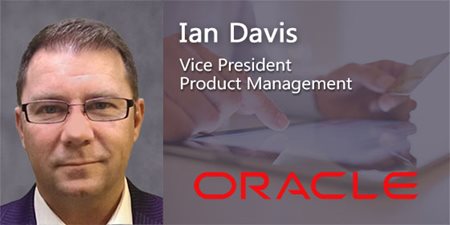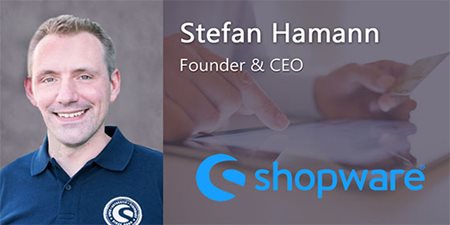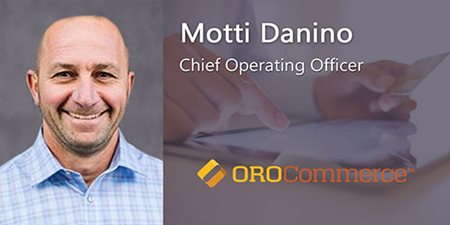Gartner Magic Quadrant for Digital Commerce 2020 Review
CMS-Connected Media Corp. is pleased to bring you exclusive coverage of the Gartner Magic Quadrant for Digital Commerce 2020. As with our other Gartner reviews, our write-ups feature exclusive interviews and comments directly from the vendors represented in the Gartner MQ. This year's Magic Quadrant features fifteen of the most prominent vendors in the digital commerce space. There is no question regarding the magnitude of the COVID-19 pandemic impact on the digital commerce market, making this report and our interviews with leaders in the sector that much more important and insightful for what's to come in the next year for vendors, merchants, and customers alike.
Click our link to receive a free copy of the Gartner Magic Quadrant for Digital Commerce 2020.
| 2019 Gartner Magic Quadrant for Digital Commerce |
2020 Gartner Magic Quadrant for Digital Commerce |
|
|
|
Click images above to enlarge |
Leaders (Adobe, Salesforce, Oracle, commercetools, and SAP)
Adobe (Magento) remains Leader in this year’s iteration of the Magic Quadrant for Digital Commerce thanks to its 'single-tenant commerce platform' and 'multitenant distributed order management and commerce analytics'. Adobe and Magento continue to combine their forces to dominate the digital commerce space, thanks to their global span, commerce scope, and capability eco-system — all listed as strengths. The report noted the shortcomings of Cloud SaaS, limitations on enterprise-scale gross merchandise value, and a focus on Adobe Commerce Cloud, less on Magento Commerce.
Interviewee: Tory Brunker, Director, Product Marketing

You have been named as Leader in this year’s edition of the Gartner MQ Digital Commerce report. What is Adobe (Magento) doing to continue to hold this position?
"We’re heavily investing in innovation to empower our merchants to deliver the best commerce experience imaginable. Through the combination of our own product development and the growing community of partners and developers - who also contribute to Magento’s product roadmap - we are outpacing all of our competitors in the delivery of new innovations for Magento brands. Recent innovation examples include our continued updates to Progress Web Apps (PWA’s); a full headless architecture using GraphQL; expansion of our cloud infrastructure to support Microsoft Azure and Amazon Web Services; updates to our native web content management system, Page Builder, and our investment in Product Recommendations for Magento Commerce powered by Sensei — Adobe’s AI and machine learning technology."
What differentiates the Adobe (Magento) platform from its competitors?
"In light of the global pandemic, we expect the growth in ecommerce initiatives will continue unabated. More than ever, brands are compelled to provide a great shopping experience that extends beyond just a basic storefront: shoppers today want an intelligent, personalized experience to facilitate their purchases, and ecommerce has become a key means of competitive differentiation. Adobe’s DNA is very much focused on experiences, and as merchants realize that a great shopping experience is all about providing customers with bespoke experiences, they are really seeing the benefit of partnering with a company like Adobe.
In addition, our growth in the market is outpacing all of our competitors. In the enterprise segment, we’ve seen tremendous growth in both our pipeline of opportunities and closed deals with Adobe Commerce Cloud (which combines Magento Commerce with Adobe Experience Manager), enabling our enterprise-sized customers to realize their vision of building commerce journeys that are experience-led rather than product-focused. In the mid-market, we’re also seeing remarkable growth, especially among B2B manufacturers, distributors, and wholesalers who are attracted to Magento’s unparalleled front-end flexibility, broad eco-system of industry-focused partners, and attractive cost of ownership. This is validated by the Gartner report, which notes that the Magento platform is ideal for both “B2B and B2C organizations seeking a robust commerce solution that can be deeply customized.”
What did you think about the “Cautions” the report mentions, and how do you plan to address them?
"Our focus is on evolving the Magento platform based on merchant needs and feedback. Since the timing of the Gartner evaluation, we’ve made marked progress in addressing several of the 'Cautions' in the report, including the release of Adobe Managed Services with Magento Commerce on Cloud Pro,and cloud-native services and tools to help our merchants upgrade like the Safe Upgrade Tool and Site-Wide Analysis Tool. Adobe will continue to invest in delivering unmatched ROI not only for brands who wish to utilize Magento Commerce as a stand-alone application but also for those who want to utilize the Adobe Experience Cloud as a whole. Adobe is uniquely positioned in the industry because we give customers everything they need to design and deliver exceptional experiences. Our cloud solutions enable our customers to work across the content workflow from inspiration, to planning to creation and delivery, to management and measurement."
What are the future plans for Adobe (Magento) in the digital commerce space for the year to come?
"Our focus is to continue introducing new and novel AI-driven capabilities to the Magento platform to drive merchant operational efficiencies across marketing, merchandising, and fulfillment, as well as bring more personalized and engaging experiences to bear for the shopper. In addition, we’re investing heavily in ways to further integrate our Magento platform with other Adobe applications, including Adobe Experience Manager, Adobe Stock, Adobe Substance, and more."
It’s not a surprise to see Salesforce continuing to lead the Quadrant for another year. The vendor earns praise for their cloud applications, innovative offering packages, leverage of their established CRM, and strong vision. The report’s cautions mention the vendor's execution, B2C technology offering, and a less than stellar B2B search.
Interviewee: Bobby Amezaga, VP, Product Marketing, Salesforce Commerce Cloud 
You have been named as Leader in this year’s edition of the Gartner MQ Digital Commerce report. What is Salesforce doing to continue to hold this position?
"Our customers are at the center of everything we do, and our commitment to them remains unwavering. We are always actively reaching out to our customers and listening to their concerns to ensure that we’re empowering them to quickly launch, pivot, scale, and succeed when it’s most critical, especially during these turbulent times.
Shortly after the pandemic hit, we realized that our customers needed the ability to start selling online fast and at scale, which is why we introduced our Quick Start Commerce Solutions, which include the necessary services to implement faster than ever. To date, we have a total of six different Quick Start Commerce Solutions — Direct to Consumer, Curbside Pickup, B2B Commerce, Grocery, and Quick Service Channels and Subscriptions with more to come. We created and packaged each solution based on the capabilities that our customers needed the most as they worked to quickly adapt to this new all-digital, work-from-anywhere world."
What differentiates the Salesforce platform from its competitors?
"Just setting up a website isn’t enough to survive in the future. The digital storefront must be built on a platform that can quickly evolve with your business when needs change. Businesses built on Commerce Cloud have the advantage of using click-based templates and tools—or create their own 'heads' — that meld service, marketing, commerce, Einstein AI, and more capabilities into one system, which leads to faster time-to-value by allowing brands to launch quickly, innovate easily, and create personalized, intelligent experiences.
While marketing capabilities are table stakes for any commerce solution, many don’t have service or fulfillment capabilities built in and need to tack on other technologies, making their digital foundation clunkier, slower, and less agile. Additionally, Salesforce’s Order Management solution — natively built on the Salesforce Platform — recently added global support for local currencies, tax calculations, and 35 languages, enabling fast and easy shopping experiences — from order to delivery — no matter where shoppers live or which channel they shop from.
Commerce Cloud also has natively embedded Einstein AI product recommendation, search and data reporting capabilities, resulting in more efficient merchandising, a more personalized customer experience, and revenue lift—automatically. Many other companies are only just starting to build simple AI capabilities today.
Finally, with more commerce happening beyond the traditional four walls and across new digital channels, a 360-degree view of each customer’s data from every interaction is becoming more important than ever for businesses to ensure seamless experiences across the entire customer journey. Salesforce Customer 360 provides companies with a unified view over their customer’s data to deliver these experiences."
What did you think about the “Cautions” the report mentions, and how do you plan to address them?
"We continue to stay close with our customers, to listen to and partner with them as their business needs change faster than ever as impacted by the pandemic and rapidly changing consumer behaviors and demands. Salesforce is constantly innovating to not only address our customers’ shifting needs but also to help them get ahead of future unprecedented changes."
What are the future plans for Salesforce in the digital commerce space for the year to come?
"Salesforce continues to pave the way in ecommerce by powering more than two trillion B2B and B2C transactions this year. With the recent introduction of Digital 360, we will continue to expand our offerings for digital leaders as they continue navigating the pandemic and new normal. We’ll also continue catching up with our customers regularly to see how they’re doing and what their needs are to determine which Quick Start Commerce Solutions to deliver next."
Leader for another year, Oracle and its Oracle CX Commerce receive praise for their commerce and CPQ functionality, outstanding execution, and impressive breadth of offerings. The strengths include a multitude of commerce platforms, a variety of delivery options, and applications, just to name a few. However, the reports suggest the areas Oracle could improve in are their customer focus and deployment options.
Interviewee: Ian Davis, Vice President, Product Management, Oracle CX Commerce 
You have been named as Leader in this year’s edition of the Gartner MQ Digital Commerce report. What is Oracle doing to continue to hold this position?
"CX Commerce stems from almost two decades of consistent executive leadership, and Oracle has been a leader in the Gartner MQ for Digital Commerce report for eleven consecutive years. We believe we’ve been able to hold this position due to the following:
-
CX Commerce is purpose-built for the future of commerce, supporting both B2B and Direct-to-Consumer models in a single, unified platform, including complex selling scenarios that require configuration, quoting, and subscription management capabilities.
-
Oracle’s investment in R&D and infrastructure – Oracle invests over $6B annually in R&D, and the CX Commerce team is able to take advantage of common platform services such as Oracle Cloud Infrastructure, AI and Machine Learning models, and applications such as CX Content that serves as a universal content hub for consistent brand interactions across all selling channels.
-
CX Commerce includes a modern, agile framework that lets businesses balance the need for developer freedom and business control. With CX Commerce, it’s not all or nothing – we offer a unique approach where businesses can develop their preferred front-end technology and still leverage built-in business user tooling to control site experiences."
What differentiates the Oracle platform from its competitors?
"CX Commerce’s differentiators are a key reason for our continued leadership position and include:
Integrated CX Suite: Gartner highlights that CX Commerce is a great fit for “Oracle customers that intend to invest further in Oracle’s core technology offerings.” Oracle CX Commerce is part of the Oracle Cloud CX suite of solutions that support the spectrum of the customer lifecycle; Marketing, Sales, and Service. To highlight a couple of integrations, CX Commerce is tightly integrated with content management from CX Content and with Oracle Infinity for Digital Analytics. CX Commerce also has a deep integration to Oracle CPQ and Oracle Subscription Management to provide a fully-featured, cross-channel, and self-service experience to help simplify complex purchases.
Front-to-Back Office: We are committed to helping organizations connect all of the data across front-to-back office. Through Oracle Integration Cloud (OIC), CX Commerce easily integrates with Oracle and non-Oracle ERP and Supply Chain applications. Oracle Integration Cloud provides a flexible and customizable way for Oracle to provide out-of-the-box orchestrations while easily allowing customers to model their own unique processes.
Evolving Business Models: CX Commerce enables businesses to evolve their digital strategies and move towards supporting more complex/configurable products and services, supporting quotation process, subscription products and services, or adapt new direct-to-consumer and/or B2B models. CX Commerce uniquely supports these from the same platform, allowing businesses to leverage existing skills, partner relationships, and investments.
Fully Curated Storefront or Headless: Oracle CX Commerce is developed as an API-first service. Oracle CX Commerce offers a unique approach which supports the spectrum of a fully curated storefront experience for fast implementation, to completely headless development for integration of commerce into any customer touchpoint.
High Availability & Scalability: Setting a new standard, CX Commerce leverages Oracle Gen 2 Cloud infrastructure and is operated on a unique High Availability Architecture that spreads the web traffic across multiple data centers to dramatically minimize the chance of site outage."
What did you think about the 'Cautions' the report mentions, and how do you plan to address them?
"The cautions in this MQ evolution were around the fact that Oracle CX Commerce must be deployed on Oracle Cloud Infrastructure (OCI), availability of reference customers, and some organizations have reported issues with still-maturing features and capabilities.
Organizations come to us because they want a commerce platform that is SaaS-based and not something that they have to maintain on their own. Our customers look at it as advantageous to deploy on Oracle Cloud Infrastructure as it was designed from the ground up to support mission-critical systems with consistent high performance and unmatched governance and security controls.
In regard to reference customers, it should be noted that this is the first year that Gartner evaluated Oracle CX Commerce based upon its own merits. Without the inclusion of Oracle Commerce on-premise (ATG / Endeca), CX Commerce was able to carve out its own position in this highly sought-after leader corner.
Finally, our pace of execution was noted as a strength in the MQ. Our continuous release cycle highlights Oracle’s heavy investment in CX Commerce and proves we can be trusted to continue innovating and driving the features and capabilities needed for customers in the future."
What are the future plans for Oracle in the digital commerce space for the year to come?
"Our belief is that businesses increasingly require a wider feature set to achieve their next-generation customer relationships, and our goal as we continue to rapidly expand our feature set is for Oracle CX Commerce to be the compelling commerce solution of choice for enterprise on-premise and other customers moving to the cloud.
Supporting Complex Business Models with CPQ and Subscriptions: We intend to blur the boundaries between the Commerce, CPQ, and Subscription Management applications so that the flows and journeys that both buyers and Administrators have are as natural as possible.
Oracle Next-gen Fusion Strategy: Make sure our commerce customers can easily leverage the data (Catalog, Customer Master, Pricing, Inventory, etc.) and processes (Order Management and Fulfillment, Global Order Promising) provided by Oracle Fusion to allow customers to capitalize on their investment, while still allowing them to operate in a heterogeneous systems landscape.
Storefront Framework and Next-gen Touchpoints: During the next calendar year, we will be releasing our new Open Storefront Framework (OSF), which will modernize how customers and partners create storefront experiences leveraging React or a preferred framework of their choice. All while keeping the business tools in place so teams can change the application without the need for engaging with technical resources.
Furthermore, the touchpoints that want to participate in commerce transactions continue to proliferate. In the B2C market, chatbots and smart speakers are one aspect, but in the B2B market, we find ourselves increasingly in conversation about IoT and how devices may instigate their own commerce transactions based on trigger events. CX Commerce will provide that all of these channel innovations are well supported.
Oracle is a data company, and CX commerce will benefit from its connectivity with other broad Oracle initiatives that provide significant differentiation. Oracle CX Unity is a next-generation Customer Data Platform that contains demographic, transactional, behavioral, Oracle Data Cloud (Bluekai, Datalogix, DataFox) and first-party information about a business's customers, and also where AI/ML processes can be executed to glean new insights about those customers. CX Commerce will be both a producer (click-stream data, commerce transactions, etc.) and consumer of data and insights that are held and determined in CX Unity, allowing CX Commerce to participate in a major part of Oracle’s CX strategy."
Newly crowned digital commerce Leader in this year’s Magic Quadrant, commercetools , is lauded for its cloud-native solutions, agile architecture model, and broad industry span. The vendor needs work on enhancing to its complexity and inclusion of less mature and experienced organizations, its eco-system, and SI partner tenure.
CMS-Connected was unable to schedule an interview with commercetools in time for our article publication but hope to include their insights in future updates.
SAP secured a Leader position for yet another year thanks to their strong geographical presence, an extensive roster of powerful customers, and a solid PIM background. The reports suggests the vendor could step up their cloud adoption, improved agility, and expand its offerings in order to meet needs of a wider variety of customers.
CMS-Connected was unable to schedule an interview with SAP in time for our article publication but hope to include their insights in future updates.
Challengers (Episerver, BigCommerce, and Shopify )
For another year, holding on to the Challenger position is Episerver , whose strengths include their product and service offerings and strong B2B and B2C capabilities. That said, the report’s cautions take aim at Episerver’s ability to serve companies of a certain size, their cloud capabilities, and the developing commerce capabilities.
Interviewee: Josh Schoonmaker, Senior Director of Strategy, Commerce at Episerver
Episerver has been named as Challenger in this year’s Magic Quadrant for Digital Commerce report. What landed you this position?
"Episerver is vigilant in creating optimal digital experiences for its client and their customers. Our ability to ceaselessly execute for both B2C and B2B customers against this promise earned us a spot as a 'Challenger' in Gartner Magic Quadrant for Digital Commerce. Customers choose us for the breadth of capabilities housed within our tightly integrated platform; enabling them to rapidly deliver core commerce and content experiences enhanced by search, A/B testing, analytics, marketing automation, and intelligent product recommendations. The speed-to-market and completeness of the offering ensures our customers high-value on their investment and one of the lowest total-cost-of-ownerships in the market. Episerver delivers on its promise to the market and empowers premier digital experiences for our customers, making us a Challenger to keep your eyes on."
What do you think differentiates you from your competitors?
"Delivering experience-driven commerce makes Episerver stand out from the pack. Competitors that are overly focused on commerce-specific solutions and transactional activities are falling behind those that know the customer of today expects an immersive, personalized buying experience regardless of what type of company they are interacting with. Episerver’s years of delivering best-in-class CMS evolved to an experience-first culture that permeated into our commerce offering. Now with the solidification of data-informed tools under Episerver Intelligence Cloud, the ability to craft unique, 1:1, memorable digital experiences have expanded. And shopper expectations are already rising, substantiating Episerver’s position.
Doing all this while simultaneously creating raving fans in both mid-market B2C and B2B makes our target customers pay attention whenever we come to the table. Recent acquisitions, like Insite and Idio, allow us to take the best from B2B commerce (e.g., embedded PIM, business user analytics) and update the existing B2C offerings while also bringing B2C commerce building blocks (e.g., form builders, product recommendation algorithms) to B2B customers. Winning over mid-market customers in both B2C and B2B gives Episerver the proficiency to navigate emerging needs for B2B2C, direct-to-consumer, and other mixed strategies."
What did you think about the 'Cautions' the report mentions, and how do you plan to address them?
"The MQ cautions that Episerver typically sells to clients with less than $500M in annual digital commerce GMV. This is less of a caution and more of an acknowledgement of our focus. We are successfully serving fast-growing mid-market firms on their evolution into digital leaders. In the United States, one-third of GDP is produced by mid-market companies, and Episerver is honed into their needs. We are an optimal choice for digital converts, working to add digital experiences to their existing channels and digital natives growing into market leaders of unified commerce. Episerver is both a catalyst and a guide on the journey toward digital maturity, so this caution feels more an acknowledgement of our focus.
The transition to a cloud-first platform has already empowered the Episerver Digital Experience Platform to become a market leader — with Episerver Commerce Cloud, Episerver B2B Commerce Cloud, Episerver Content Cloud, and Episerver Intelligence Cloud offering the full-spectrum of Episerver solutions as cloud-hosted, managed, and updated products. Though we have legacy solutions still in the market, any customer coming to Episerver today will experience a complete cloud-native experience."
What position do you think Episerver will hold in the next year’s report? How are you going to do that?
"Episerver is on the move in the market. With the recent acquisition agreement for Optimizely (top-rated experimentation platform) added to the acquisitions of Idio (AI recommendations) and Insite (B2B Commerce Cloud) – the latter two now officially a part of the Episerver platform – and its roots in combined content & commerce, Episerver is projecting a cohesive vision of a premier Digital Experience Platform. Earlier this year, numerous intelligent Episerver solutions were brought together in the Episerver Intelligence Cloud, giving customers the ability to offer customers intent identification, 1:1 recommendations, personalized content, search, CDP, analytics, and soon, experimentation throughout the Episerver ecosystem. Episerver is also leading the way with serving both B2C and B2B with equal success; and as the solutions cross populate and open B2B2C, D2C, and other channels, the appeal of the Episerver’s unified offering will expand.
As a Challenger, Episerver has already proven our ability to execute. With the acquisitions broadening commerce capabilities, Intelligence Cloud empowering commerce, and proven success in B2C, B2B, and any-other-2C, Episerver will be garner the 'completeness of vision' to cross from Challenger to Leader."
BigCommerce made a hop across the border from Niche Player to Challenger thanks to good revenue growth in the past year, enhanced interoperability, and a strong focus on customers. Areas the vendor did not excel in included the need for third-party tools for multi-environment support, a limited system of integration partners, and B2B features.
CMS-Connected was unable to schedule an interview with BigCommerce in time for our article publication but hope to include their insights in future updates.
Shopify continues to be a Challenger and gets praised for its expansion efforts in the midmarket sector, ease of use, and extensive app store. The vendor did not get the same praise for their B2B commerce offerings, their geographical presence, and transaprency on pricing matters.
CMS-Connected was unable to schedule an interview with Shopify in time for our article publication but hope to include their insights in future updates.
Visionaries ( VTEX and Elastic Path)
This year, VTEX leapt from Niche Players over into the Visionaries quadrant in part due to growth, breadth of functionality, and impressive extensibility and modularity. The vendor's cautions mention their limitations regarding the industries they serve, their limited regional focus, and personalization.
Interviewee: Alex Soncini, co-founder VTEX 
VTEX has been named as Visionary in this year’s Magic Quadrant for Digital Commerce report. What landed you in this new position?
"In their description of VTEX, Gartner states that VTEX has moved into the Visionaries quadrant due to its growth, unique marketplace plus commerce plus order management system (OMS) offering, and geographical expansion. To us, it's clear Gartner recognizes the need for brands and merchants alike to move beyond traditional e-commerce to explore new, marketplace led business models as part of a comprehensive and growth-oriented digital commerce strategy. VTEX's strong growth in 2019 with expansion into the US and Europe is proof that our approach is meeting a critical need in the market."
What do you think differentiates you from your competitors?
"There are a number of things that set us apart from the competition. First is the fact that VTEX offers the world's first and only fully integrated commerce, marketplace, and order management solution. In the report, Gartner states, 'Some B2C and increasingly B2B commerce strategies require marketplace platforms to grow digital revenue.' And with VTEX, our customers can go live with commerce, marketplace, and order management powered commerce experiences in a fraction of the time and cost of licensing and manually integrating three separate solutions. In fact, the average time to go live on VTEX is 109 days, which is why we call ourselves the time-to-revenue platform.
Additionally, along with being a modern microservice, API, cloud, and headless commerce platform, VTEX provides a low-code development environment, called VTEX IO, where our customers can compose commerce experiences by assembling pre-built components from VTEX, adding third-party applications, and building their own custom components. This is important because it aligns with Gartner's Composable Commerce approach for building commerce experiences that they call 'the future of commerce'. With composable commerce, merchants leverage various best-of-breed solutions to build commerce experiences ideally suited for their business and customers. our VTEX IO low code development environment delivers on the composable commerce vision that Gartner paints and is something other vendors in the report can't offer."
What did you think about the 'Cautions' the report mentions, and how do you plan to address them?
"The cautions Gartner mentions are areas we are already working to improve upon. When you read Gartner's cautions, you will see each one of them include a caveat of sorts. For example, when Gartner states that most tenants use VTEX for B2C commerce and are in the CPG, retail, or manufacturing industries, they add that VTEX B2B capabilities are improving. And when Gartner describes how 50% of VTEX’s SI partners are in Latin America, they go on to state that our partner network is expanding, especially in North America. Let's face it, Gartner knows what they're talking about when it comes to digital commerce, and their vendor evaluations are very thorough. However, at VTEX, we have been working hard to improve in these areas even before Gartner's 2020 MQ research began. I fully expect, when the 2021 Magic Quadrant process kicks off, VTEX to be much improved in each one of these areas. I will go so far as to say that they will not be identified as cautions by Gartner a second time."
What position do you think VTEX will hold in the next year’s report? How are you going to do that?
"I think VTEX is well-positioned to move into the leader quadrant in 2021. We continue to gain momentum and acquire new enterprise customers in the US and Europe, and the series D funding of $225M that we announced today will allow us to accelerate that growth with the addition of key resources and investments in our solution. I also believe the market will continue to move in VTEX's direction, with the continued rapid move to cloud and microservice-based commerce solutions as brands move away from legacy monolithic commerce platforms and the growth of marketplace business models."
Elastic Path improved their position as a Visionary this year thanks to their interoperability, wide industry span, and new Moltin acquisition, which later became the new Elastic Path Commerce Cloud. The report points out that the vendor needs to improve their complexity level, as they do their SaaS and B2B Commerce offerings.
Interviewee: Greg Lord, VP of Marketing 
Elastic Path has been named as Visionary in this year’s Magic Quadrant for Digital Commerce report. What landed you in this position?
"We are thrilled to be recognized as a Visionary by Gartner. There are a few primary drivers that led to Elastic Path being named a Visionary in this year’s Magic Quadrant for Digital Commerce report. The first is that we have a history of being a digital commerce innovator. We literally invented the headless commerce space back in 2011, and since then, so many other vendors have jumped onboard the headless commerce train because of all the benefits that a headless approach provides. Second, our acquisition of Moltin earlier this year shows that we’re investing to stay ahead of the curve and provide our customers with the leading-edge technology they need to drive their digital strategies."
What do you think differentiates you from your competitors?
"There are three primary factors that differentiate us from our competitors. First, we are the only headless commerce provider trusted to deliver mission-critical commerce experiences for over 250 of the world's largest and most innovative brands, such as tax day for Intuit’s Turbo Tax or new smartphone launches for T-Mobile. All other headless vendors are still learning how to support mission-critical customers. Second, Elastic Path offers the broadest and most complete set of headless commerce capabilities in the market, thereby enabling us as the only vendor able to serve the needs of complex businesses with ambitious digital strategies. Third, the way we have designed our offering enables brands to launch and continuously optimize unique digital commerce experiences faster than is possible with any other solution in the market."
What did you think about the 'Cautions' the report mentions, and how do you plan to address them?
"The digital commerce analysts at Gartner always do a great job, and we believe this year’s MQ analysis was pretty spot on. The first caution about 'Complexity' is actually an observation specific to all headless commerce projects and not specific to Elastic Path. Fortunately, we have a big announcement planned in the next few months, which will change the game by simplifying headless commerce so that all businesses will finally be able to reap the benefits of a headless approach. The second caution about 'Lack of SaaS' is actually no longer true since our acquisition of Moltin. Given the timing of Gartner’s analysis, the Moltin acquisition was not able to be formally evaluated as a part of this year’s MQ. When it comes to the third caution about 'B2B commerce', we do take some exception on this one. Our B2B capabilities are robust and industry-leading, as evidenced by our roster of B2B customers such as Johnstone Supply, Illumina, Pella Windows, Goodman, and many others."
What position do you think Elastic Path will hold in the next year’s report? How are you going to do that?
"These things are very hard to predict, so I won’t venture a guess on exactly where we will be positioned next year. However, what I can say is that the combination of 1) our maniacal focus on customer success, 2) the fact that we now (since the acquisition of Moltin, which was not eligible for inclusion in this year’s evaluation) have the broadest, most robust headless commerce offering in the marketing, and 3) we are democratizing headless microservices, such that every brand can take advantage of the benefits of a headless commerce approach - these three factors position us very well to serve the needs of the market. At the end of the day, continuing to be a market-leading innovator and ensuring our customers are wildly successful are what Gartner looks for in their analyses, so we’re very bullish about the future."
Niche Players (Spryker, Shopware, Oro, Kibo and Unilog)
Spryker is another new presence in this year’s Magic Quadrant for Digital Commerce. The vendor gets recognition for their modular commerce architecture, support of headless commerce, and ability to serve for B2B and B2C sectors. Spryker did not receive the same praise on their revenue model, regional presence, and personalization.
Interviewee: Alex Graf, CEO of Spryker 
Spryker has been named as Niche Player in this year’s Magic Quadrant for Digital Commerce report. How do you feel about this position?
"It is an honor for Spryker to be included in the top 15 of more than 160 digital commerce platform vendors considered by Gartner analysts in the digital commerce platform landscape. We are also the youngest vendor to ever be included in the Magic Quadrant. This validation of Spryker technology and business strategy has come with the majority of our business being established in Germany and EMEA, so we are very encouraged about the future as we continue expanding into the United States market in 2021.
Spryker is also positioned as the most visionary of new entrants into the Magic Quadrant, and also ahead of industry heavyweights Shopify, BigCommerce and Episerver."
What do you think differentiates you from your competitors?
"Spryker provides incredible speed to value for businesses that need to create or change their commercial and transactional relationships with their customers. The COVID-19 pandemic has shown two great examples pf how Spryker provides speed to revenues and speed to value. For example, a major automotive manufacturer needed to consolidate all dealer inventory data and shopping experience across a geographic region. They produced a solution using the Spryker Cloud Commerce OS platform in three weeks — exceeding all expectations and allowing them to maintain deal flow during the pandemic. An international specialty grocery chain had to close a few stores when employees contracted the virus, so they were able to develop a pick & collect functionality for employees to fulfill online orders and a native mobile application for customer home delivery. Spryker enabled continuous value delivery to customers, and the grocery chain is considering
Using packaged business capabilities and following an API based, headless approach in the cloud, Spryker simplifies the technology and application development so business leaders can focus on customer experience and new options for engaging with customers."
What did you think about the 'Cautions' the report mentions, and how do you plan to address them?
"Spryker’s cloud-based software license is a recurring revenue license model and, therefore, a critical piece of the Spryker business. While we have numerous technology and services partners winning deals as part of the Spryker ecosystem, the vast majority of Spryker revenues are renewable software license revenues--the proportion of which is in accordance with the top quartile of enterprise software vendors.
Spryker is the youngest vendor to be included in the enterprise digital commerce platform Magic Quadrant; as a result, we are still building a global footprint. We have recently signed clients in North America, South America, APAC, and Eastern Europe and will continue to expand in a methodical and well-executed manner.
Spryker has a rich collection of features with over 900 discrete modules combined into over 40 packaged business capabilities. The foundation of Spryker technology provides customization for any size enterprise to build unique and compelling commerce environments for their B2C, D2C, B2B, marketplace, or any other business model. We will continue to add partners and modules that allow enterprises to extend any level of personalization to their customers."
What corner of the quadrant do you think Spryker will be in for next year’s report? How are you going to do that?
"We are very encouraged by the inquiries we are receiving from inclusion into the Gartner 2020 Digital Commerce Platform Magic Quadrant, and we are looking forward to leveraging the momentum. From a business standpoint, we will be executing sales, marketing, and partner strategies in the United States, and therefore our ability to execute in both the B2B and the B2C markets will increase significantly. In terms of products and features, the upcoming enterprise marketplace capabilities and other key business-oriented updates will propel Spryker to the highest levels of the visionary quadrant."
New Entrant, Shopware , is lauded for its flexibility regarding licensing, low code rule builder, and customized ecosystem. The vendor’s cautions include a limited regional reach, cloud capabilities, and few large customer references.
Interviewee: Stefan Hamann, founder and CEO of Shopware
Shopware has been named as Niche Player in this year’s Magic Quadrant for Digital Commerce report. How do you feel about this position?
"The Magic Quadrant highlights the top global vendors in digital commerce, according to Gartner. The fact that we are one of the top 15 vendors worldwide in this area makes us incredibly proud and motivates us to even greater efforts for our customers. We should also keep in mind that we only had our first relevant contact with Gartner at the beginning of the year. Thus, being highlighted directly in the first year within the Magic Quadrant is unusual and makes us extraordinarily proud – especially since we are named next to global tech giants. In our opinion, the fact that we were listed as a niche player is absolutely normal for beginners. A quote from the Gartner website might help to understand this positioning: "Keep in mind that focusing on the leaders' quadrant isn't always the best course of action. There are good reasons to consider market challengers. And a niche player may support your needs better than a market leader. It all depends on how the provider aligns with your business goals.”
What do you think differentiates you from your competitors?
"There are several things that set Shopware apart — starting with our claim 'your freedom to grow'. We at Shopware truly live up to that motto offering the unique opportunity to seamlessly scale a merchant’s business by providing the flexibility to alternate between deployment and licence modes of the platform. In addition, Shopware inherently unlocks the growth potentials of our merchants by, for instance, offering out-of-the-box multi-language & multi-currency capabilities as well as additional sales channels (e.g., eBay). Next to seamless scalability and growth enablement, Shopware offers a CMS optimized for commerce experiences, which ensures a consistent and enhanced user experience across all channels. Plus, as Gartner highlights in its Magic Quadrant 2020 report, Shopware’s Rule Builder is a core strength of the platform: The Rule Builder is an integral part of Shopware’s low-code ease of use approach and builds the linchpin in terms of flexibility since it allows for changing the business logic of Shopware without having to write code. This is a true differentiator since marketers and non-technical users can implement automation & personalization processes and streamlined workflows without having to rely on developers. Combined, this means Shopware is unique in its ability to allow for the flexibility needed in our increasingly complex world while inherently offering the merchants multiple growth paths in a low-code user approach."
What did you think about the 'Cautions' the report mentions, and how do you plan to address them?
"As we strive to boost every merchants’ business through improving our product offerings for them, we truly believe that there is always room for optimizations and innovations. This is why we made our roadmap public and actively ask our customers and our ecosystem for feedback and further ideas. We count the three 'Cautions' Gartner mentioned in the report also as valuable feedback — however; they were mostly related to the segment of the market we historically addressed and the timing of the launch of our Cloud offering:
Regional Reach: As a German company, of course our ecosystem is historically strongest in Europe. Nevertheless, Gartner considers us to be so relevant to the global market that they have included us in the global Magic Quadrant for Digital Commerce. From a product perspective, Shopware itself can also be used worldwide. Looking at this point from another angle, this also creates great opportunities for potential American customers and partners. For example, customers can set themselves apart as innovation drivers and differentiate their online store from other competitors by using Shopware.
Partners also have Great Opportunities with Shopware: We have many partners, especially in German-speaking countries, who have been working with us for many years and who have also written an incredible growth story thanks to the strong growth of Shopware. In other markets, we can also write such a growth story together with new partners.
Cloud Capabilities: We launched our Cloud offering in May 2020, and thus after the Magic Quadrant for Digital Commerce evaluation process had already finished. So in the next evaluation, this caution is likely to disappear.
Suitability for Large Enterprises: In general, Gartner recommends Digital Commerce leaders to consider Shopware. From our point of view, this is, of course, absolutely correct. The reason why Gartner recommends the use of Shopware for companies under USD100 million GMV is that we have few reference customers in this GMV category. However, some - measured by GMV — much larger customers use Shopware, such as Notebooksbilliger, Euronics, or Igeba from Belgium. Also, on Gartner Peer Insights, you can find the rating of one of our customers who makes a turnover between 1-3 billion USD for instance. From our point of view, it is very clear: Shopware 6 allows retailers to write their own success story - no matter if small or large. Shopware 6 is so flexible that it is suitable for all needs and, above all, can adapt to changing requirements."
What corner of the Quadrant do you think Shopware will be in for next year’s report? How are you going to do that?
"The Magic Quadrant is intended to help technology buyers in their vendor selection process. The criteria for which vendors are included in the Magic Quadrant and where they are positioned changes annually based on market conditions, trends, and customer insights. We as Shopware will neither align our strategy nor development of the software to be positioned in the Magic Quadrant for Digital Commerce in the best possible way. Our goal is to make every merchant successful. This is what we stand for, and this is what our strategy has always been focused on. If, in the end, those efforts result in a different positioning of Shopware within the Magic Quadrant, this means that Gartner’s weighted criteria match with our strategy and customer feedback, and we are happy to continue working with those inputs. We are very excited about how our platform helps merchants grow their business, and we are proud to see them succeed. To that end, we continue to invest in improving and enhancing our platform every day."
New entrant, Oro , was noticed for its B2B commerce and CRM capabilities, complex architecture, and sizeable industry span. The vendor’s cautions include their relatively small partner ecosystem — which is to be expected for a relatively newer company — along with certain gaps in their offering and lack of marketplace syndication support.
Interviewee: Motti Danino - Chief Operating Officer
Oro has been named as a Niche Player in this year’s Magic Quadrant for Digital Commerce report. How do you feel about this position?
"Gartner’s Magic Quadrant celebrates the top players in the digital commerce space, and Oro’s inclusion cements our position at the very highest echelons of our industry. This is a validation of our unique approach to digital commerce: where other companies focus on B2C eCommerce and treat B2B as an afterthought, OroCommerce is built from the ground up to give manufacturers, wholesalers, and other B2B sellers the specific digital tools they need to succeed. This honor recognizes our success and shows that for many enterprise operators, a purpose-built B2B digital commerce platform offers better customer experiences, more sophisticated selling tools, and a smarter way to sell effectively online.
Gartner assessed companies for both B2B and B2C digital commerce, and as B2B specialists, our designation as a 'Niche Player' is understandable. We’re a far leaner and more focused operation than the other companies in this year’s Magic Quadrant, but thanks to our powerful capabilities and strategic vision, we’re punching well above our weight."
What do you think differentiates you from your competitors?
"We’ve defined the market for B2B eCommerce tools, a space we continue to dominate. While others in the sector have tried to play catch-up by introducing B2B features, their offerings simply repurpose infrastructure and features designed for B2C functions. By contrast, Oro offers custom-built B2B eCommerce tools, making us the go-to digital platform for manufacturers, distributors, wholesalers, suppliers, and brands.
Besides our unique focus on B2B digital commerce, we’re known for our commitment to customer experience and for giving users the tools they need to consistently delight buyers. When you’re selling to business customers, you need to give them the advanced discovery, shipping, and product recommendation features they expect, along with customization and other sophisticated features that simply can’t be delivered within a B2C-first paradigm.
We’ve also built our platform to reflect the needs of everyone on the B2B digital commerce team. Oro’s powerful workflow engine enables the creation of flexible, customized native workflows for both internal or external users. Meanwhile, OroCRM, our natively integrated customer relationship management platform, empowers sales teams, product teams, marketing teams, customer support teams, and others to use Oro’s tools to strengthen customer relationships and grow revenues."
What did you think about the 'Cautions' the report mentions, and how do you plan to address them?
"Gartner is right that we’re a smaller, more specialized company than some of our competitors — but we see that as a core strength. Because we’re focused on B2B, we’re able to meet the specific needs of business sellers while using our open-source, modular architecture to also enable the seamless management of B2C sales. And it’s worth remembering that while B2C digital commerce gets most of the media attention, B2B eCommerce is now a $6.6 trillion industry. We’re the only digital commerce platform dedicated to serving that space — and that makes us the biggest fish in a rapidly growing pond.
While we welcome Gartner’s expert insights, our unique approach might have led them to overlook some of the ways in which we’re actually more versatile and technologically advanced than our competitors. Our 'deploy anywhere' philosophy enables bare-metal, on-premise, private cloud, public cloud, or OroCloud deployments — a powerful capability for businesses of all kinds. We also offer native machine learning capabilities that are fully integrated into our feature-set — not merely flashy add-ons like some of our competitors’ claimed AI capabilities. We aren’t satisfied simply with doing digital commerce better than anyone else in the B2B space — we’re committed to doing digital commerce better than anyone else, period."
What corner of the quadrant do you think Oro will be in for next year’s report? How are you going to do that?
"There’s no limit to our ambition. We want to be the best digital commerce platform in the industry, using our flexible architecture and rich feature-set to serve both B2B and B2C sellers of all sizes. Oro is disrupting the B2B eCommerce space, but we’re doing it with a platform that’s also uniquely flexible and capable of serving B2C, B2E, B2G, marketplaces, and other eCommerce needs too. Oro offers rich B2B features along with a modular approach that delivers a genuine, full-service eCommerce experience for both B2B and B2C sellers.
Winning a place on Gartner’s Magic Quadrant shows that we’re on the right track, and in next year’s edition, I’m confident you’ll see increasing recognition that when it comes to flexible, full-service digital commerce, OroCommerce is the platform to watch."
As one of the new entrants in this year’s Magic Quadrant for Digital Commerce, Kibo gets praise for its commerce and personalization capabilities, their retail-oriented solutions, and their integration platform. The cautions include industry and regional limitations as well as an unconsolidated UI.
CMS-Connected was unable to schedule an interview with Kibo in time for our article publication but hope to include their insights in future updates.
Still a Niche Player, Unilog gets credit for their strong B2B supports, PIM and WSM, and event management capabilities. Their cautions reference their regional focus, limited partner network, and B2C support.
CMS-Connected was unable to schedule an interview with Unilog in time for our article publication but hope to include their insights in future updates.
Final Thoughts
The 2020 Digital Commerce MQ had many of the expected names in predictable places but had plenty of surprises as well. Most notably, the absences of long time Quadrant veterans Sitecore and Digital River.
The Leaders Quadrant was dominated by well-recognized digital commerce players, with one new entrant, commercetools, joining the ranks of powerhouses like Adobe (Magento), SAP, Salesforce, and Oracle. The Visionary and Challenger Quadrants had some marked changes with VTEX, leaving the Niche Players corner to join Elastic Path as a Visionary, and BigCommerce moving up into the Challenger corner to be alongside Episerver and Shopify. The Niche Player Quadrant saw the most significant activity and movement. With the exception of Unilog, all of the vendors named in the Niche Quadrant — Oro, Kibo, Shopware, and Spryker — were brand new to the Gartner Digital Commerce MQ.
An old English proverb says, 'Necessity is the mother of invention'. With the challenges and disruptions that the unprecedented global COVID-19 pandemic has brought, it remains to be seen what innovations will emerge in the digital commerce space in the year to come, and how that will reflect in next year's Quadrant. CMS-Connected will continue to report on the advancements, innovations and solutions the digital commerce vendors will bring forth in 2021.

Ellie Somfelean
Ellie is a Reporter and Content Marketer with CMSC Media. She is passionate about social media and digital marketing. She has a vast experience with content creation, influencer marketing and brand promotion.